Dometic all electric steering, four years later and now with autopilot

It’s now been four years since I installed Dometic’s all electric steering system (AES) on Panbo(at). When I wrote my initial review of the system, I bragged that after sixty hours, the system worked perfectly and without incident. Allow me to add a zero to my brag. After six hundred trouble free hours I’m back with an update on the system, a new auto pilot, and information on additional all electric systems for more boat types.
A refresher

Let’s start with a quick refresher of the system installed on Panbo(at). The all electric steering system consists of three components: the steering actuator or ram, the helm unit, and a small color display. The connections between these components are, not surprisingly, all electric. The system runs multiple CANBus networks between the helm unit and the actuator to ensure reliable communications.
Installing this system was a pleasure. The entire electrical and electronic connection to the actuator is a single harness that screws into the end of the actuator. The connections to the back of the helm unit and display snap in place. The only other connection needed is a source of engine RPMs. That was taken care of with a connection the boat’s NMEA 2000 network leveraging the Yamaha CommandLink to NMEA 2000 gateway.
With those few connections made, the system is ready to go. The system allows adjustment of both low and high speed steering effort as well as the number of turns from lock to lock.
Extended on the water testing
After 600 hours on the water with AES, I’m no less impressed by the system than I was the first day I installed it and timidly started testing it. There is something unnerving about heading out on the water with new steering technology installed by yours truly. But now, confidence replaces my apprehension. Heck, I forget about the system for long periods of time. The system just works. Turn the wheel a few degrees, the motor rapidly turns to match. Swing the wheel quickly to go hard over and the motor quickly follows. All without any maintenance to system beyond a little grease into the zerks.
I spend a lot of time on the water in Panbo(at) when others might choose not to be out there. Recently, as part of my Seakeeper testing, I’ve tried to find the worst testing conditions I can. That testing also proves AES’ ability to stand up to big loads and adverse conditions. One of my favorite features of AES is the system’s ability to lock the outboard in place when steering inputs aren’t provided. I know that no matter how big a following sea, swamping conditions, or other forces hit the motor, it’s going to stay put.
With as many hours as I’ve put on the system, I’ve come to take precise, predictable, and low-effort steering for granted. Until I run a boat with more traditional hydraulic steering, at which point I’m reminded of the benefits I enjoy.
Another benefit of the electric system is consistency. The hydraulic system I removed from Panbo(at) to install the all electric one was, to put it kindly, tired. At that time the boat had about 1,200 hours on it and I had every indication the system was original. The helm pump was sloppy and showed significant signs of wear. The first maintenance I performed when I bought the boat was replacing the seals in the steering ram. That then required bleeding the hydraulic system. In contrast, the only maintenance I’ve done with the AES system is to grease it annually.
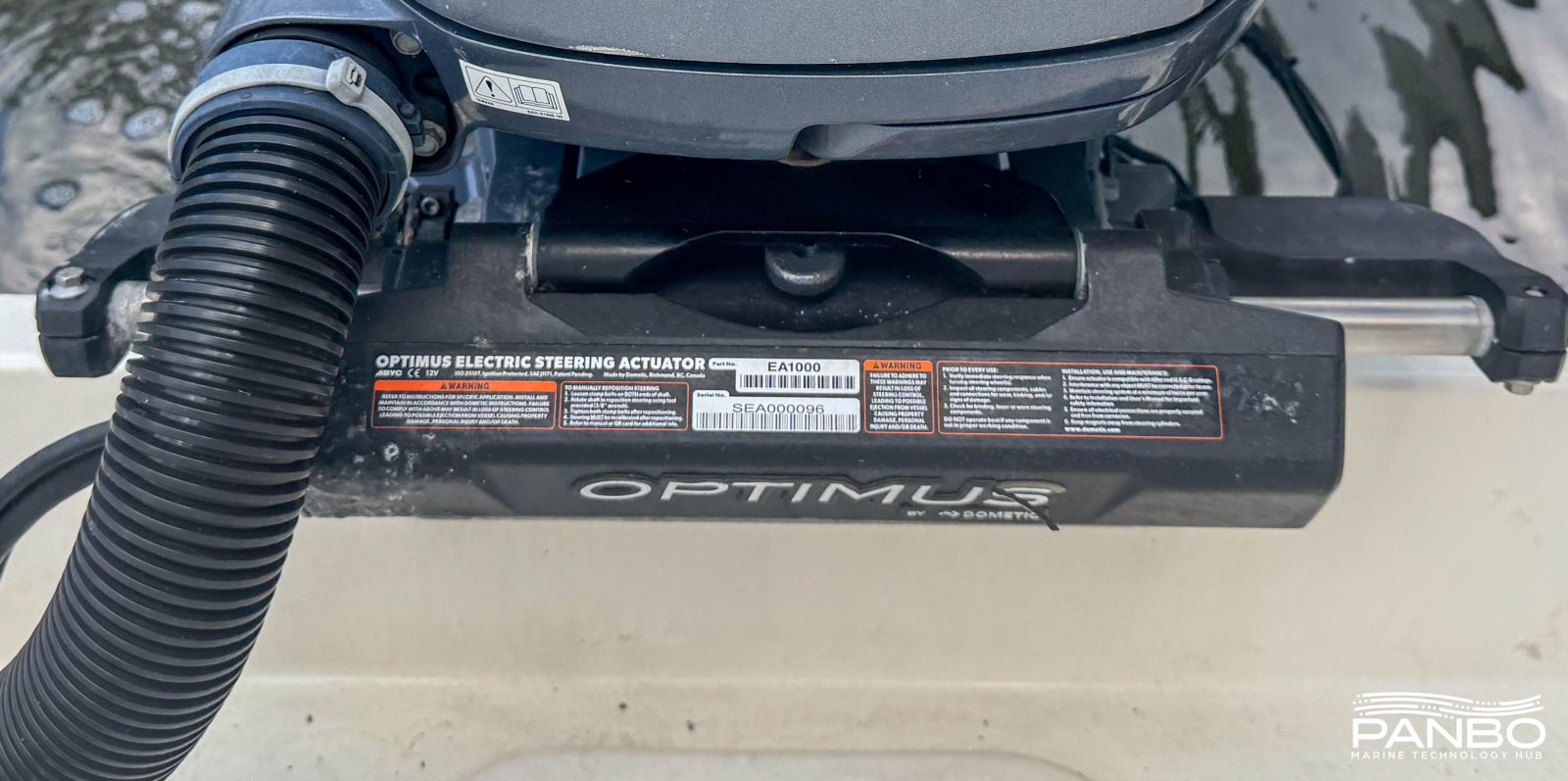
The only slight negative I’ve seen are a few blemishes in the finish of the steering actuator. However, if you zoom in on the photo above, you can see the serial number of that unit is SEA000096. That means I have the 96th unit to roll off the assembly line and I suspect with such a low serial number, this is not representative of later units.
Autopilot upgrade
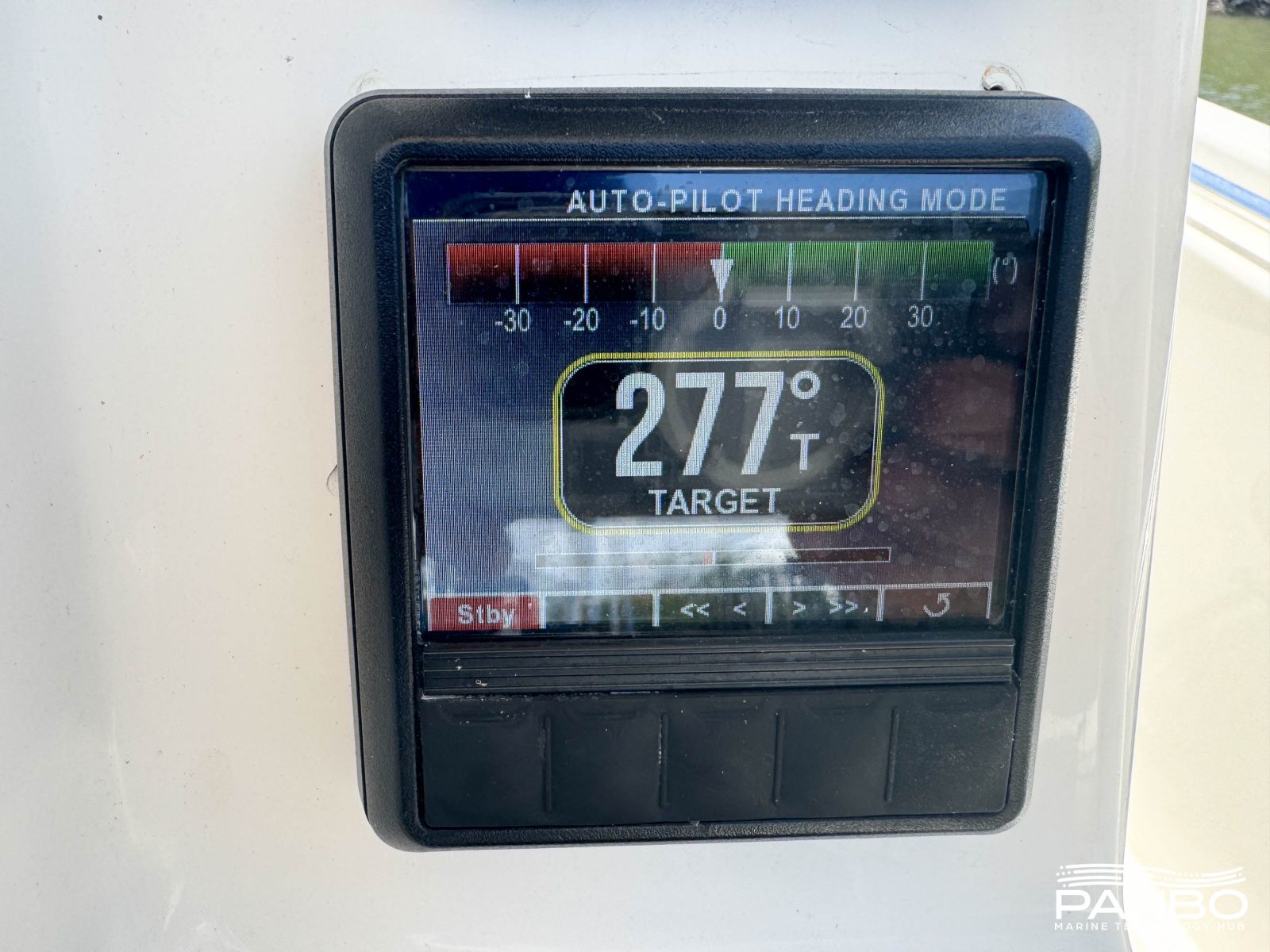
Shortly after installing AES, I set out to find an autopilot for it. I expected this would be a relatively simple and affordable undertaking. I was wrong. My (incorrect) assumption was that because steering commands are issued via CANBus, an autopilot would have less work to do and hence be simple to install and cheaper. Instead, what I found was that compatible autopilots from all four major electronics brands cost between (Raymarine and Garmin examples) $2,500 and $3,000. That’s at least $1,000 more than a comparable bundle with a hydraulic pump included (Raymarine and Garmin examples). Drive-by-wire autopilots work on systems ranging from outboards to IPS and Zeus pod systems. It seems these systems command a premium.

Fortunately, Dometic has a solution. For $800 they offer their SeaWays Go autopilot upgrade. This upgrade includes a Simrad Precision-9 solid state compass and 9-axis sensor. According to Dometic, the Precision-9 is running custom firmware to interface with the AES system. Communications between the Precision-9 and the AES controller occur via AES’ NMEA 2000 connection.
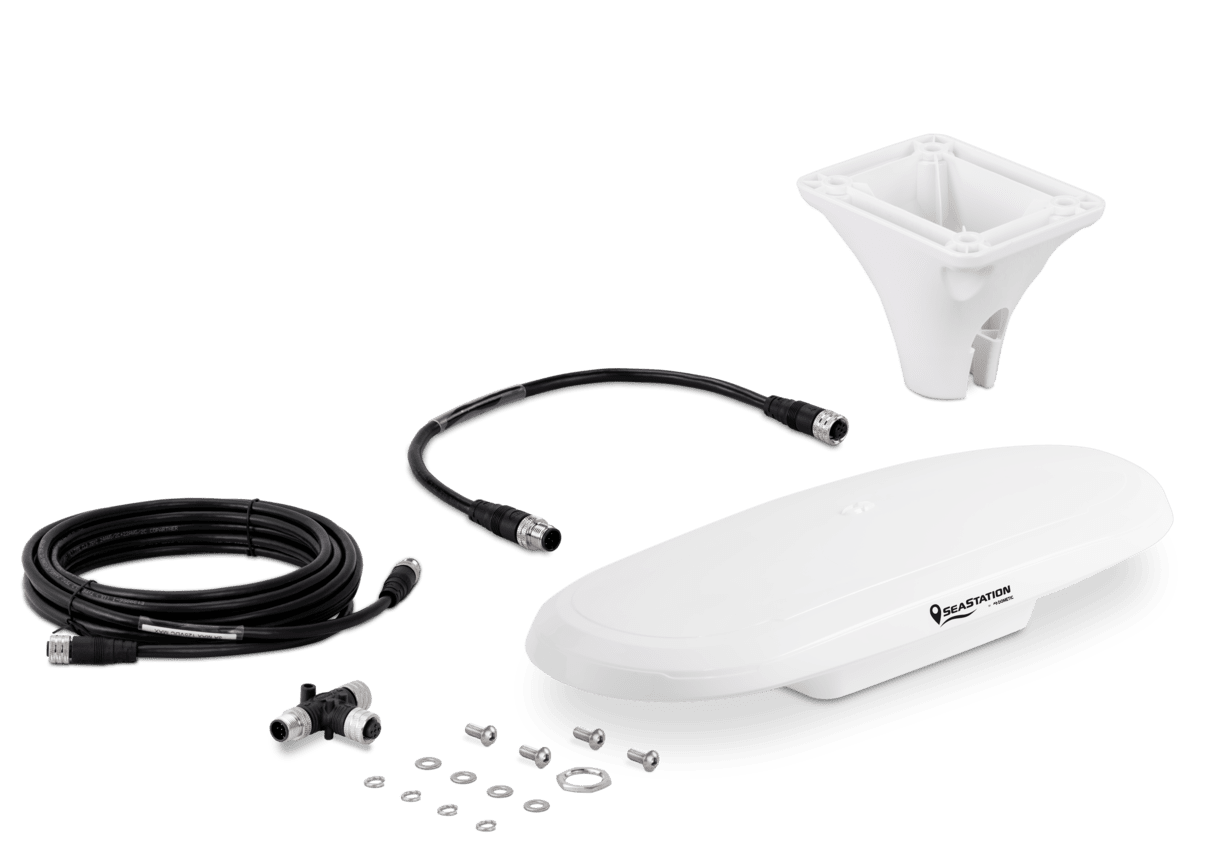
Dometic also offers their more sophisticated SeaWays autopilot combined with their SeaStation dynamic positioning system. This more expensive and more feature complete system allows route and track following as well as dynamic positioning when combined with multi-engine installs with shift-by-wire engines. In this system, the Precision-9 is replaced by a full satellite compass.
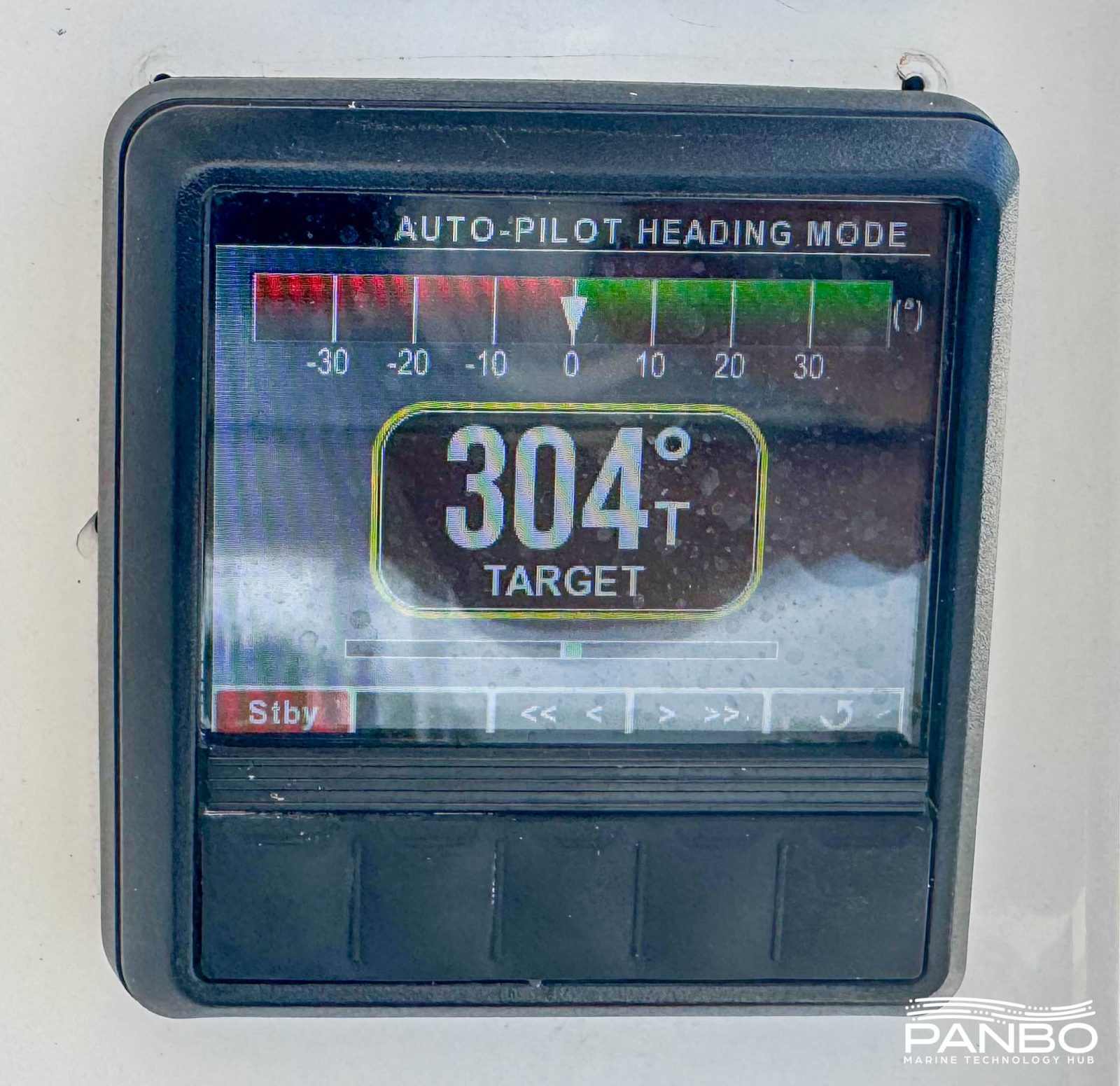
SeaWays Go is a heading hold only autopilot. That means the autopilot will hold a heading but not navigate to a waypoint or follow a route. My experience is that this is the primary way autopilots are used. There certainly are those who prefer to track to a specific waypoint, but my anecdotal conversations suggest they are in a great minority. Once the autopilot is engaged, you can use the buttons under the arrows to quick tap for a one degree heading change or press and hold for a ten degree change.
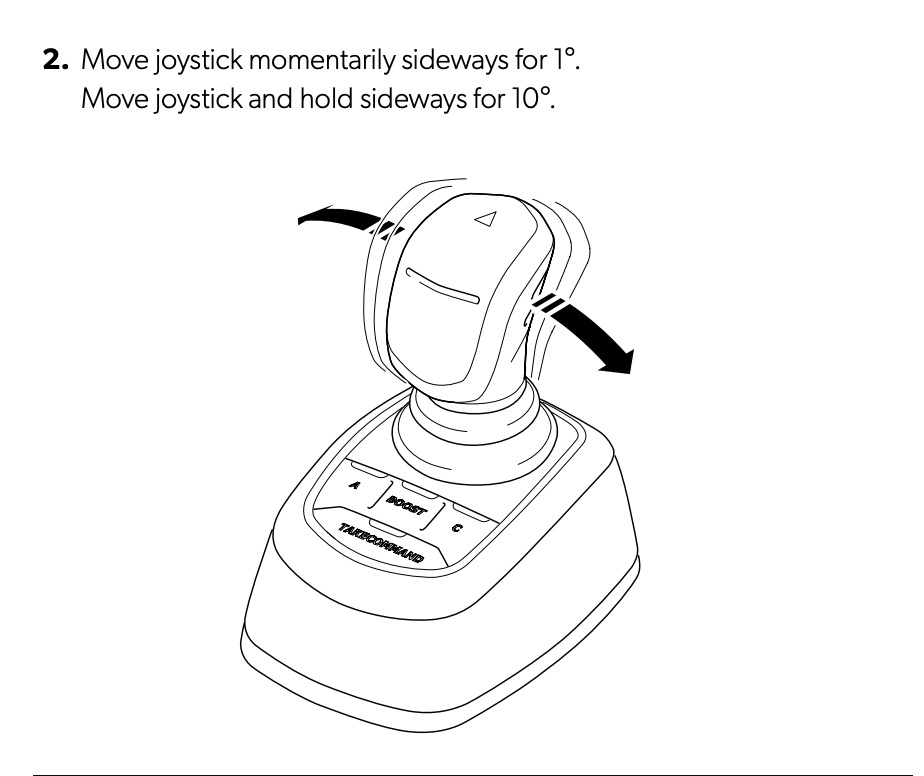
On joystick equipped boats, the joystick can be used in the same manner to change heading. But, in my time with SeaWays, I’ve found the override functionality to be far more intuitive.

Override mode has quickly become my favorite feature on the SeaWays Go autopilot. With heading hold activated, I can simply grab the wheel and turn it as normal. As the operator turns the helm, the autopilot pauses itself and the helm functions as normal. Once the operator stops turning the helm and heading stabilizes, the autopilot resumes control of the boat.
In my use, I find that I engage the autopilot shortly after leaving the helm and typically don’t cancel it until I’m ready to dock the boat. I think the improvement is even more noticeable on a small, outboard powered boat like Panbo(at). Without autopilot, it had a tendency to wander, with it, the boat simply goes where I expect.
All electric options for more boats
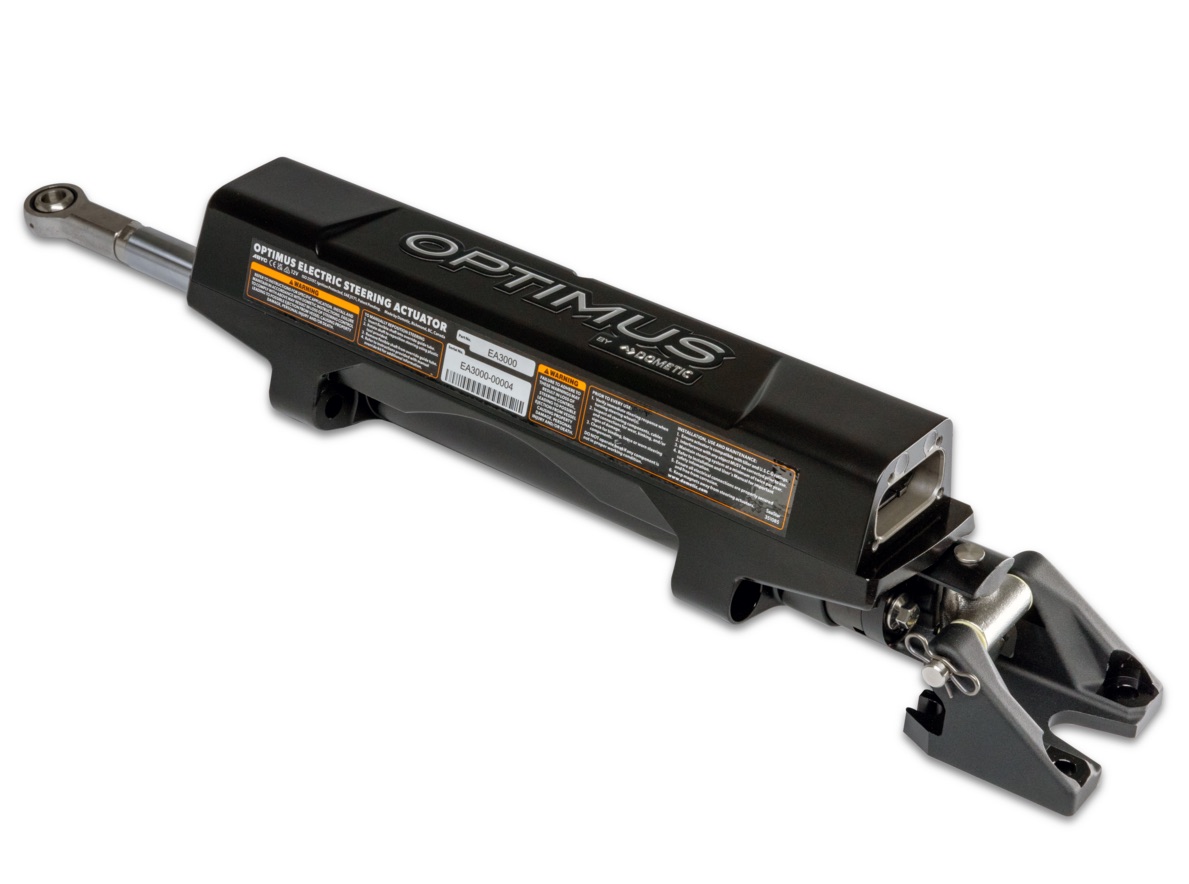

As soon as one sees the benefits of AES for outboard applications, it is natural to wonder when those benefits will be available to other boats including inboard powered boats. I’m sure it comes as no surprise that Dometic has been hard at work adapting the technology to inboards. Currently, they offer inboard actuators for single engine wakeboard boats and single and twin rudder inboard boats under 40 feet.

Dometic touts a long list of benefits available by replacing traditional hydraulic steering with an inboard all electric steering system. One thing not mentioned here that came up in conversations with Dometic engineers is the ability to program the system in novel ways traditional hydraulic systems can’t match. For example, they’re experimenting with turning the inside rudder at a different rate than the outside rudder to increase responsiveness through a turn.
During my conversations, Dometic also mentioned that they are working to determine the steering system and technology that best matches a range of boats and sizes. They pointed out that in larger boats, hydraulic systems offer advantages that, at least so far, the electric system doesn’t. I believe a lot of that has to do with the forces involved as the boats get bigger.
Over the coming years, I expect we will continue to see benefits to boaters from the effective leveraging of this technology. For decades, at least from an outsider’s perspective, steering systems didn’t change much. But, the introduction of individual control of each rudder and the simplicity of all electric system installation and maintenance stand to provide meaningful benefits.


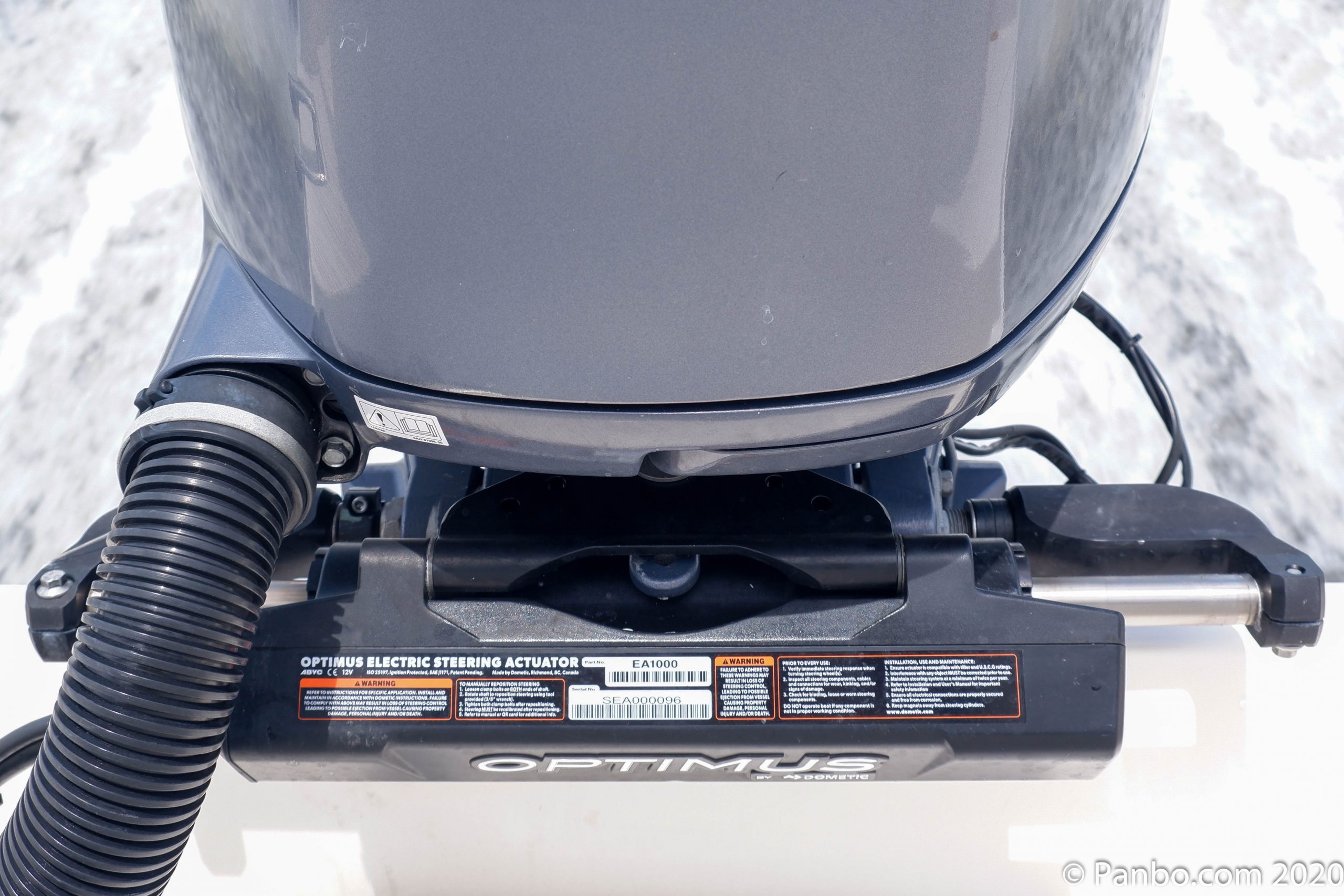










Super interesting. Will be fun to see how this my install in more existing applications when the product line continues to expand (e.g. over 40′).
very encouraging to hear that 600 hours of use have been trouble free. Is there any indication from Dometic that these can eventually be purchased/installed by the end user? Would love to do this upgrade on my boat.